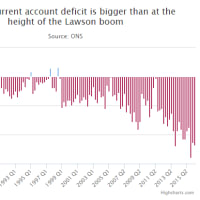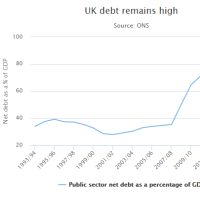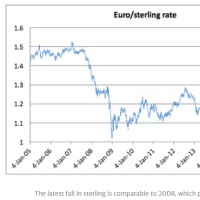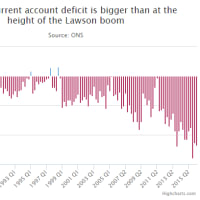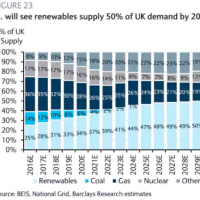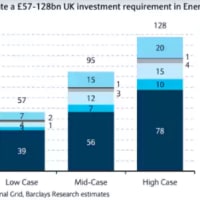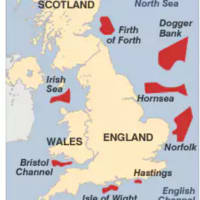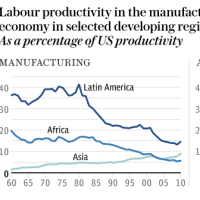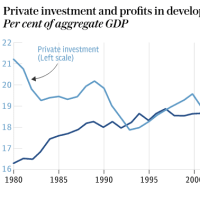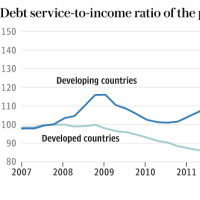Cut-throat competition is slashing offshore wind costs to unthinkable levels
(血で血を洗う競争が洋上風力発電コストを想定外の水準に叩き落とす)
AMBROSE EVANS-PRITCHARD
Telegraph: 2 OCTOBER 2016 • 7:30PM


(血で血を洗う競争が洋上風力発電コストを想定外の水準に叩き落とす)
AMBROSE EVANS-PRITCHARD
Telegraph: 2 OCTOBER 2016 • 7:30PM
For years the complaint against offshore wind was prohibitive cost. The new worry is that it is suddenly becoming too beguilingly cheap.
洋上風力発電に対する昔からの苦情と言えば、あり得ないコストでした。
新たな懸念は、それが突如として魅惑的過ぎるほど安価になりつつあることです。
The world's biggest wind companies are driving down power contracts so fast in their coat-throat battle for market share that they may be making impossible commitments. The sums of money at play are huge, and the stresses may not come to light until the financial cycle turns.
世界屈指の風力発電会社は、マーケット・シェアを巡る血で血を争う競争において、行使価格を履行出来ない約束をしているかもしれないほどの勢いで下落させています。
取り沙汰されている金額は莫大なもので、ストレスは金融循環が進むまで明らかにならないかもしれません。
A string of tenders this year have slashed strike prices to once unthinkable levels. The Danish giant Dong Energy stunned the industry in July by clinching an offshore deal in the Netherlands at a strike price of €72.5 per megawatt hour (MWh), half the sorts of levels agreed less than five years ago.
今年は多くの業者が行使価格をかつては想像も出来なかった水準まで引き下げました。
デンマークの大手、ドン・エナジーは7月、オランダで行使価格72.5ユーロ/メガワット時で洋上風力発電契約を結んで業界を仰天させました。
これは5年弱前に合意された水準の半分に相当します。
Known as Borssele 1 & 2, the project was quickly surpassed by an even cheaper bid of €60 per MWh by Vattenfalls in a Danish tender. "My world record was blasted away in weeks," said Rene Moor, head of wind management for the Dutch government.
ボルセラ1と2として知られるこのプロジェクトは直ぐに、デンマークのバッテンフォールによる60ユーロという更に低い価格で追い抜かれました。
「うちの世界記録は数週間で破られた」とオランダ政府の風力発電事業を取り仕切るRene Moor氏は言いました。
The auctions have become intoxicating. "There's bidding fever going on, and it can be very addictive," said Ranjan Moulik, an energy specialist at the French bank Natixis.
入札は凄いことになりました。
「延々と続く入札があるんだ。滅茶苦茶はまるかもしれないよ」とフランスのナティクシス銀行のエネルギー・スペシャリスト、Ranjan Moulik氏は言います。
The Danish deal is roughly half the strike price for the Hinkley Point nuclear project – now £97 per MW, after adjusting for inflation. It is shockingly cheaper, even taking into account the problems of intermittency and the peculiarities of the Danish system.
デンマークの契約の行使価格はヒンクリー・ポイントの約半分です(インフレ調整後で現在97ポンド)。
間欠性の問題やデンマークのシステムの奇妙さを考慮したとしても、驚くほど低い水準です。
This year's contracts are a spectacular vindication of offshore wind technology. Aerodynamic smart blades and sensors are now de rigueur. The latest 700ft turbines can generate 8 megawatts each, slashing number of foundations and cables needed. Load factors have risen from 30pc a decade ago to 50pc on the newest arrays. Sheer industrial scale has done the rest.
今年の契約は洋上風力発電技術の素晴らしい証明です。
空力スマートブレードやセンサーは今や必需品です。
高さ700フィートの最新タービンはそれぞれ8MWを発電することが出来て、必要な基礎やケーブルの数を削減しています。
負荷率は10年前の30%から最新の50%まで上昇しました。
産業規模だけで残りはなんとかなりました。
Yet sceptics warn that the technology is moving so fast that nobody really knows what hidden disasters lie in wait, or what the levels of corrosion will be, or what will happen to costs over the long life of a contract.
しかし懐疑派は、このテクノロジーは潜在的大惨事や、消耗レベルがどうなるか、長期の契約期間の間にコストがどうなるかといったことについて、本当にわかっている人間が誰もいないほど急速に動いていると警告します。
"People are being very complacent about taking on risks they don't fully understand," said Paul Bradley from Canada's Northland Power.
「皆、自分達が本当に理解していないリスクを取ることにとても無頓着だ」とカナダのノースランド・パワーのポール・ブラッドレー氏は言いました。
"The margins are too tight. They are overlooking the costs of operation and maintenance. If there are financial problems you are going to be road kill pretty quickly," he said, speaking at the WindEurope summit in Hamburg.
「利幅が小さ過ぎる。オペレーションとメンテナンスのコストを見過ごしている。金銭的な問題があれば直ぐにやられる」とハンブルクで開かれたWindEuropeサミットでの講演で発言しました。
Today's benign circumstances has artificially depressed costs. The slump in North Sea oil and gas exploration means that wind operators can lease ships and offshore crews at bargain rates. The global hunt for yield in a world of zero rates has compressed financing rates. Steel has been cheap. None of this may last.
今日の良い状況が人工的にコストを抑えてきました。
北海の石油ガス試掘が低迷していると言うことは、風力発電会社が破格の値段で船やクルーを使えると言うことです。
ゼロ金利の世界でイールドを求める国際的な動きが金利を抑え込んでいます。
鉄鋼も値下がりしています。
このいずれも長続きしないでしょう。
Talk of over-reach was the coffee table talk at the forum, though not the only worry. There is a gnawing angst over China as its hungry wind companies copy European technology and turn their sights on global conquest. They installed half of all the world's new turbines at home last year, but may soon start to saturate the Chinese market.
手を広げ過ぎているという話はフォーラムのあちこちでささやかれていましたが、心配はこれだけではありません。
中国の貪欲な風力発電会社がヨーロッパのテクノロジーをコピーして世界制覇に乗り出しており、これを巡る消し難い懸念が存在します。
中国勢は昨年、世界中で新規に建てられたタービンの半数を国内に設置しましたが、中国市場は間もなく飽和し始めるかもしれません。
The fear is that they will soon do to Europe's wind industry what their solar champions have already done to Europe's devastated solar industry. "If the Chinese seriously break out of their home market and push overseas, it will be very dangerous for the Europeans," said Dirk Briese from Wind Research.
危惧されるのは、彼らが間もなくヨーロッパの風力産業に対して、中国の太陽光大手がヨーロッパの打ちのめされた太陽光産業に対して既に行ったことをするのではないか、ということです。
「中国勢が本気で国内市場から飛び出て海外進出を狙うなら、ヨーロッパ勢にとって非常に危険になるだろう」とウィンド・リサーチのダーク・ブリーズ氏は言いました。
The sums of money coming into play are eye-watering. Mark Lewis, head of utilities at Barclays, says capital expenditure on new wind power is likely to be £63bn by 2030 in Britain alone, and as much as £88bn in a high case scenario.
関与するお金の額も途方もないものになっています。
バークレイズのヘッド・オブ・ユーティリティーズ、マーク・ルイス氏によると、新規風力発電への資本投資は英国だけでも2030年までに630億ポンド、極端なシナリオなら880億ポンドにも達する可能性が高いそうです。
He calculates that 47 GW of old plant - mostly in coal, gas, and nuclear - is to be shut down in the UK over the next fifteen years. Offshore wind will plug a big part of the gap.
英国内では今後15年間に47ギガワット分の旧型発電所(主に石炭、ガス、原子力)が閉鎖される、と同氏は試算しています。
洋上風力発電が大部分の穴埋めをするでしょう。
Dong has already invested £6bn in its British operations. It has vowed to press ahead with a further £6bn over the next four years despite the Brexit vote, insisting that there will be no changes to its expansion strategy. "We will carry on as before," said Martin Neubert, the group's strategy chief.
ドン・エナジーは既に英国での事業に60億ポンドを投資しました。
ブレグジットにも拘らず、拡大戦略に一切変更はないと強く主張して、更に60億ポンドを今後4年間に投資すると約束しています。
「これまで通り実行する」と同グループのストラテジー・チーフ、マルティン・ノイベルト氏は言いました。
"What we understand is that the British government is still committed to renewable energy and stands behind the Paris agreement on climate change," he said.
「英政府は今も再生可能エネルギーにコミットしていて、気候変動に関するパリ合意を支持している、と我々は理解している」とのこと。
The Danish state-controlled group – an amalgam of six companies around the old core of Danish Oil & Natural Gas - is already the dominant player in British waters. It aims to spearhead the UK's drive to triple offshore capacity to 15 gigawatts or more by 2030, the world's most ambitious scheme.
デンマーク政府がコントロールする同グループ(デーニッシュ・オイル・アンド・ナチュラル・ガスを中心に6社を合併)は既に英国領海で支配的です。
英国が2030年までに洋上風力発電を15ギガワット以上まで3倍増にしようとする動きの先鋒になろうとしています。
これは世界で最も野心的スキームです。
Mr Neubert insists that the Borssele formula is a template for future costs in Britain. "The Netherlands is not a one-off. It absolutely can be done elsewhere and I think we can drive down costs ever further," he said.
ノイベルト氏は、ボルセラのフォーミュラは英国における将来のコストのテンプレートだと強く主張しています。
「オランダは一回限りのことではない。他の場所でも絶対的に実行可能だ。より一層コストを押し下げられると思う」とのこと。
Any British contract must command an extra premium, ceteris paribus. The Dutch state covers the costs of offshore infrastructure and access to the grid. Britain does not.
他の条件が一定ならば、あらゆる英国の契約が追加プレミアムを決めるに違いありません。
オランダ政府が洋上風力発電のインフラ・コストと送電網へのアクセスをカバーしています。
英国ではありません。
The Borssele project is just 14 miles off the Dutch coast. The giant 1.2 GW Hornsea One wind farm will be 75 miles out from Yorkshire into the North Sea, with cable and service costs to match.
ボルセラ・プロジェクトはオランダ沖、僅か14マイルのところにあります。
1.2ギガワットの巨大なホーンジー・ワン風力発電所はヨークシャーから北海へ向かって75マイルの所に作られ、ケーブルやサービスのコストが発生します。
Even so, the bid implies future contracts in Britain below £80, and ultimately much lower. An internal study by Dong concluded that the levelized cost of energy (LCOE) could be as low as £35 per MWh by 2030 if the scale of investment is big enough.
だとしても、この入札は英国における将来の契約が80ポンドを切り、最終的にはこれを大きく下回ることをほのめかしています。
ドン・エナジーの内部調査の結果によると、投資スケールが十分ならば、均等化発電原価(LCOE)は2030年までに最安で35ポンドになり得るそうです。
All this will be music to the ears of the British government as it prepares the next two sets of tenders for the North Sea.
この全てが北海での発電に向けて次の2回分の入札準備を進める英政府にとって喜ばしいことでしょう。
Yet it raises the awkward question of why the UK agreed to a strike price for its Burbo Bank and Walney wind projects at £150 per MWh, and why it agreed to Hornsea One at £140 under its contract-for-difference scheme as recently as April 2014.
しかし、バーボバンクとウォルニーの洋上風力発電プロジェクトの行使価格を150ポンドで合意した理由や、つい2014年4月にもホーンジー・ワン洋上風力発電について差額決済契約に従って140ポンドで合意した理由など、厄介な問題も生じています。
Government documents suggest that the generous terms of these three projects could generate as much as £7.6bn of subsidies over their lifetime, spread across several operators.
政府の文書によれば、これら3つのプロジェクトの寛容な条件によって、耐用年限までに最大76億ポンドの補助金が複数のオペレーターに広がって生じる可能性があるとのこと。
These contracts are by now a sunk cost, the fee Britain has had to pay – and will continue to pay for a long time - to achieve critical mass and scale in a new industry. The next two thirds of the UK's vast national gamble offshore wind will be on an entirely different tariff.
これらの契約はこれまではサンク・コストであり、英国が新産業において最少必要量とスケールを得る為に支払わなければならない(そして今後長期に亘って払い続ける)手数料でした。
英国の洋上風力発電を巡る国を挙げた一大ギャンブルのうち、次の2分の3は全く違った料金表になるでしょう。
If the industry can deliver on its astonishing promises, it will provide Britain with a relatively cheap source of decarbonized power – from a home-made source – in good time before the COP21 climate accords start to bite in earnest. One day it may even look like a shrewd strategy.
同産業が驚くべき約束を果たせるのなら、それはCOP21合意が本格的になる十分以前に、英国に比較的安価な脱炭素動力源を(自家ソースから)供給するでしょう。
いつか、賢明な戦略のように見えることすらあるかもしれません。














